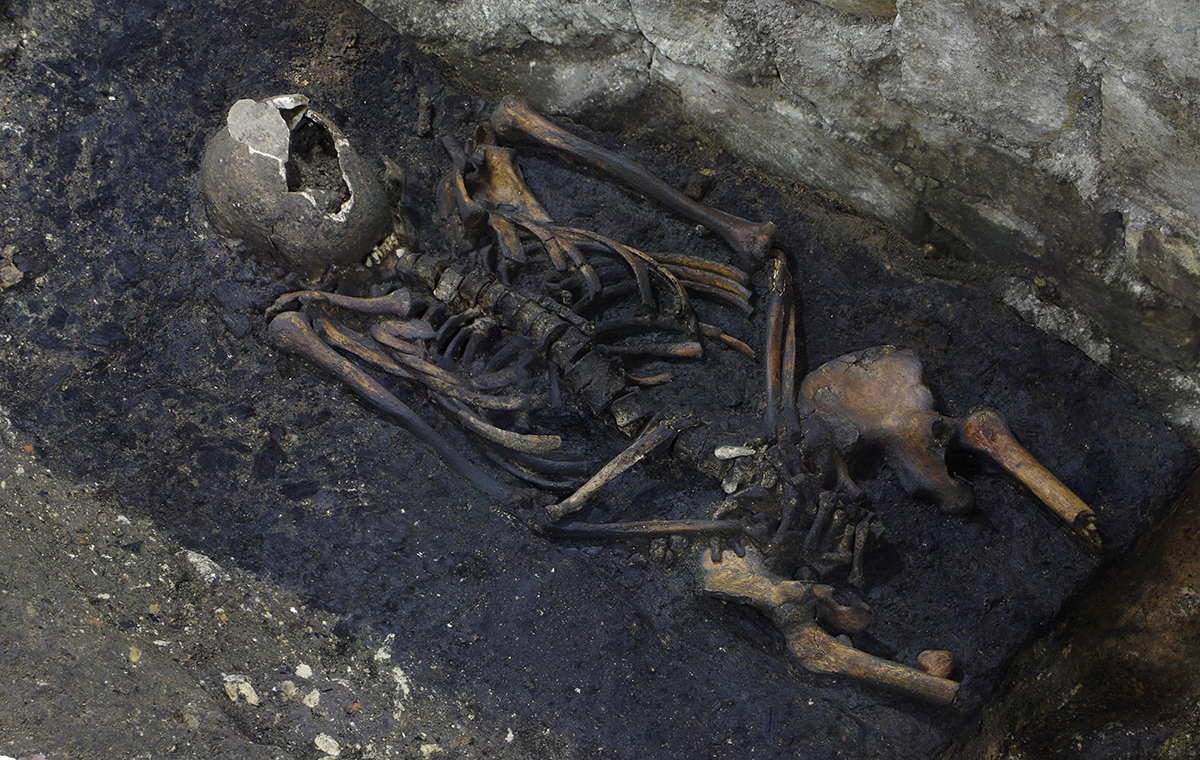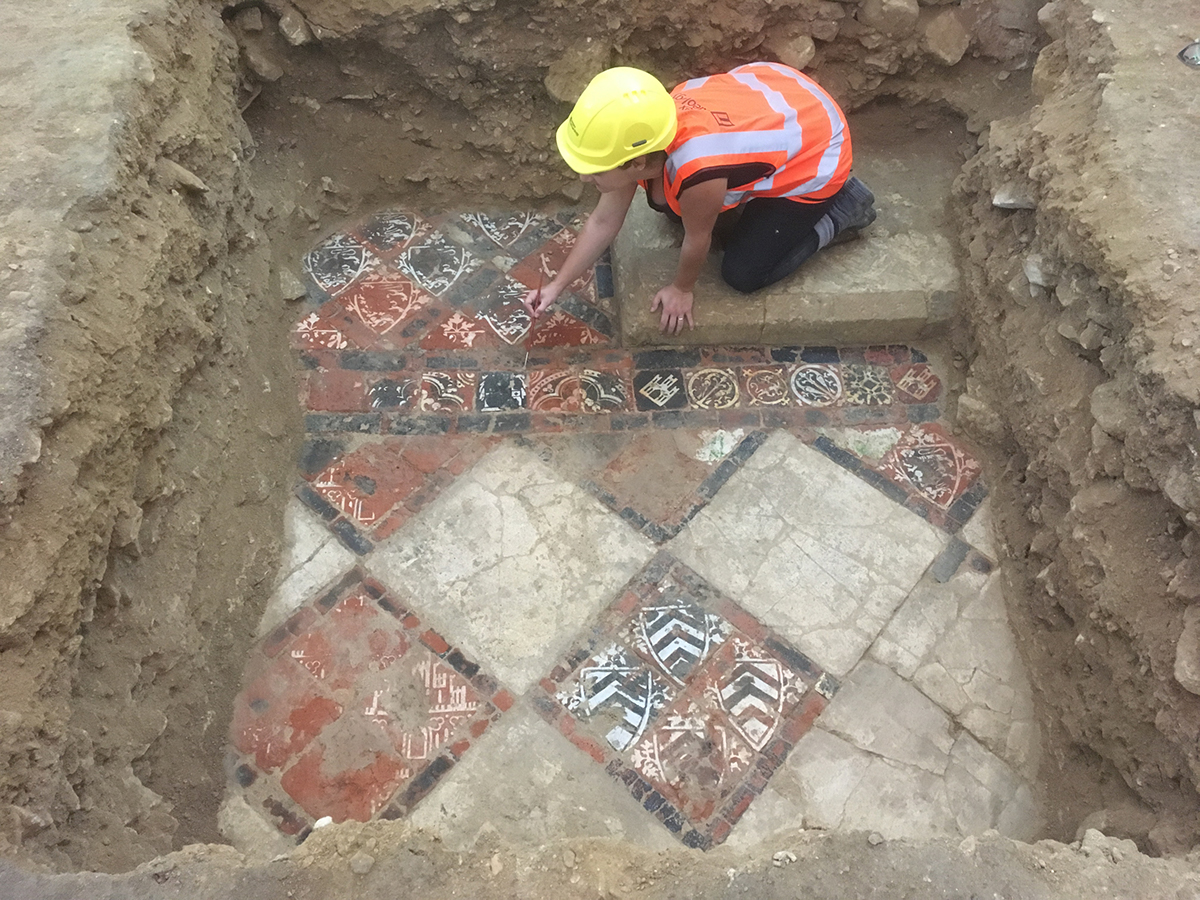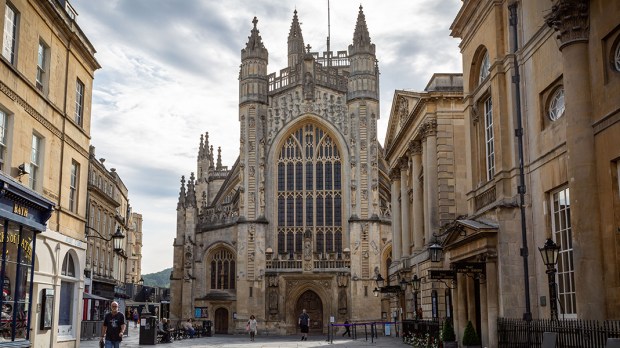Lenten Campaign 2025
This content is free of charge, as are all our articles.
Support us with a donation that is tax-deductible and enable us to continue to reach millions of readers.
Renovation efforts to repair the crumbling floors at Bath Abbey, in the English town of Bath, have offered experts the opportunity to excavate the area below the structure, where they have found a wealth of historically relevant artifacts and architecture. The work has brought to life the storied history of one of England’s most famous cathedrals.
The modern Bath Abbey stands on the site where one of the largest medieval cathedrals in England once loomed over the landscape. The current iteration of the structure stands atop the remains of the Anglo-Norman cathedral that preceded it, but its history does not begin with the Normans, but with the Roman-influenced Saxons.
Current Archaeology explains, in their report of the dig, that at its inception the site was home to a 7th-century community of “holy virgins,” who may have cared for the property alongside a male religious community — as was the practice of the time. Evidence also suggests, however, that the male community may have arisen as a natural change, for instance if the female order could not replenish their numbers.
In the 8th century, the building came under ownership of the King of Mercia, and the property was converted to something of a royal manor. At some point in the next 200 years, however, the property was converted back to a church building, as King Edgar chose the Bath Cathedral for his coronation, in 973.
Evidence from the 10th century suggests that this era was marked by a thriving religious community. The finds included expertly crafted masonry designs and an extensive cemetery. Among the graves, excavators found two rare examples of a burial process that would cover the body or coffin in charcoal.

Senior Osteoarchaeologist Kirsten Egging Dinwiddy explained the process:
“During this period, cleanliness of both the body and spirit were potent religious concerns, so charcoal might well have been chosen for its absorptive powers – not necessarily to prevent the corpse from polluting the surroundings, but also to protect the ‘clean’ remains from the “unclean” cemetery soil …”
After the Norman conquest of England, the property was purchased by John of Tours, Bishop of Wells. He transferred the seat of his bishopric from Wells to Bath, and then he began the immense undertaking of restoring the area, an effort that would include the deconstruction of the church and the construction of the cathedral.
The bishop would not see the cathedral completed, as he died in 1022 and the construction would not be complete until the 1160s. While there is little left of this cathedral in the modern Abbey, the building that stands today was designed around its foundation.
The Norman period was marked by impressive sculptures, many of which are of saints, but others are suspected to be self-portraits of the masons who crafted the cathedral.
The cathedral was an important religious site for the rest of the Middle Ages, as is evidenced by the constant renovation and beautification. An incredibly rare discovery, which Current Archaeology called a “once-in-a-lifetime find,” of a beautiful, well-preserved tiled floor — depicting artistic motifs of kings and creatures with vivid coloring — suggests that a lot of money was poured into the effort.

The heyday of the Bath Cathedral would last until the 15th century, at which time King Henry VIII disbanded the monasteries of England. The property fell into the hands of a private buyer, but was sold back to the City of Bath by the mid 16th century, when the local government started making some repairs, which included the addition of a Tudor style roof.
The roof was changed again to the Victorian style in the 1860s, but traces of the Tudor ceiling have been discovered by the archaeologists working the site. They have found enough evidence to digitally recreate what the Tudor roof may have looked like.
Today, the experts and volunteers working at Bath Abbey routinely find the intricately carved marble remains of the church’s previous iterations. These discoveries shed light on the many cultures that inhabited the site at different historical times, as well as some of the methods by which they constructed the many enormous iterations of the church structure.
In order to bring the community together in the effort, the site directors train volunteers in the proper archaeological techniques required for excavation and preservation. The entire community of Bath is welcomed to share in the educational mission to uncover the full extensive history of this important English Christian site.

